How To Work In Python In Windows
January 13, 2022
Tutorial: Installing Python on Windows

Python is a popular open up-source, high-level programming language. It'south intuitive, and it offers many helpful tools and libraries — Python is a powerful data science asset to have in your toolkit. To start working with Python, nosotros start need to download it and install it on our operating organization (in this instance, Windows).
How to install Python on Windows
There are 2 principal means of installing Python on Windows: installation from the official Python website or from Anaconda, a convenient distribution of Python and R programming languages. Choose the first option if you are a programmer using Python for various purposes: creating websites, network programming, developing software applications. If instead, your piece of work is focused on information science and motorcar learning, then Anaconda is the best choice for you lot. Essentially, Anaconda is a powerful data scientific discipline platform that provides more than 1500 congenital-in Python and R data science packages — and also the most pop Python IDEs. With Anaconda, you can cull to use the graphical user interface (GUI) instead of the command line. Also, it is adapted for processing big amounts of information, easily working with different environments and applications, and managing the packet versions.
Bank check if Python is already installed
Before starting the installation process, we want to check if Python is already installed on your computer (e.k., by a previous user), and if and then, which version of Python. To do so, open up the command line awarding Command Prompt (in Windows search, type cmd and press Enter) or Windows PowerShell (right-click on the Start push and select Windows PowerShell) and blazon at that place python -5. If you found that Python is already installed on your computer and desire to cheque the path of the installation, run where.exe python in the command line awarding.
Install Python on Windows from the official Python website
If you see that Python isn't installed, you can use the official Python website to install it.
Step ane. Open up the Python Releases for Windows folio, select Python version, and download Python executable installer

Hither you can choose whether to download Python 2 or Python 3 (or both). Later, we volition hash out in more detail the technical steps of downloading and installing both Python 2 and Python 3, only first, let's determine which of them (or both) you really need.
Python iii is a more recent version of Python released in 2008 and designed to fix the problems in Python ii. In comparing to Python two, Python 3 has a simpler and more intuitive syntax, it offers a wide range of useful libraries (especially for data scientific discipline), and a large community of Python developers maintain it. In contrast, Python 2 is no longer supported. Hence, downloading the latest Python three release is generally the best choice if y'all aren't certain which version to utilize. You volition most likely demand only Python 3 if you're going to work with new projects.
However, in some cases, you may besides need Python 2. For example, if some of your visitor's projects are written in Python ii, which is incompatible with Python 3, y'all might have to run older scripts. Also, sometimes, you may want to employ a Python package that hasn't been updated in Python 3. In such situations, You'll need Python ii.
If y'all select the latest Python 2 release to download, choose Windows x86-64 MSI installer, which will identify your Windows version (32-scrap or 64-bit) automatically:
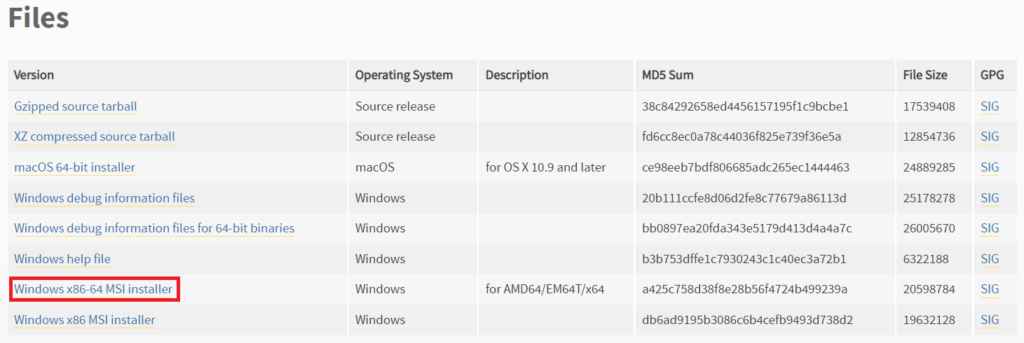
To download the latest Python iii release, you lot have to manually cull the installer that suits your Windows version:

Step two. Run the installer
Permit'southward follow this process step-by-step separately for Python two and Python 3. Call up that, depending on your needs, you can install either one of them or both of them. Information technology volition cause no problems, and you volition always be able to choose which Python version to piece of work in.
Python two.
Run the downloaded executable file for Python 2 that you will find in your Downloads folder. Select at each stride the following options:
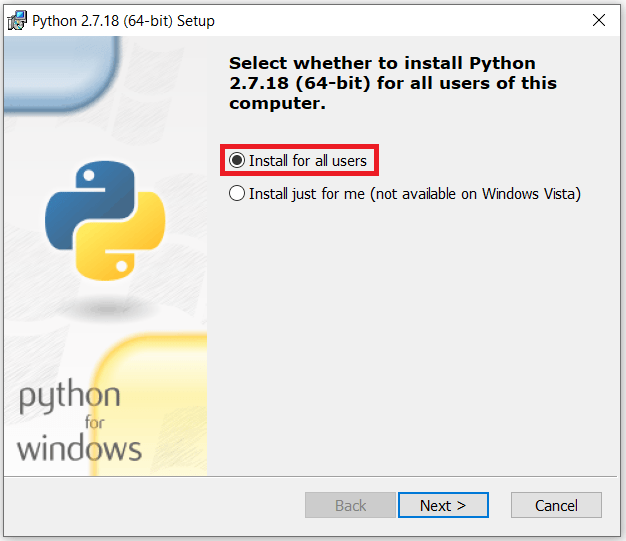
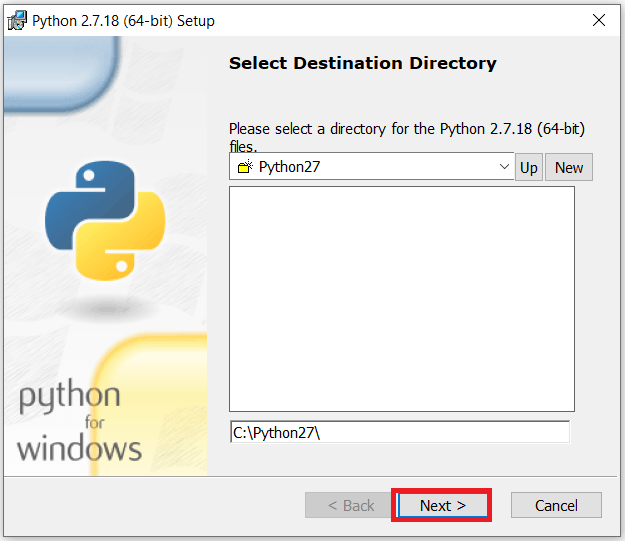

After that, merely confirm everything at each popular-upwards window to consummate the installation.
Now you accept the latest Python 2 release successfully installed.
Python iii.
Download installer for Python 3, and find it in your Downloads folder. On the first pop-up window, select both checkboxes at the bottom to enable calculation Python to your path in Windows automatically. So select Install At present:

The installation procedure can have a few minutes. Then, in the adjacent window, select Disable path length limit to avoid potential issues with long path names in the hereafter:

The latest Python 3 release has been installed on your reckoner.
Step 3. Verify if Python was successfully installed on Windows
If you lot installed only one version of Python, open the command line and run python -V. If you installed both Python ii and Python 3, you have to make a pocket-sized adjustment that nosotros will discuss in the following (optional) stride.
Footstep 4 (only if you installed both Python two and Python three). Reassign system variables
This step is necessary for being able to easily access both Python versions from the command line.
If you at present run python in the command line, you will see simply the version of Python two (in our case, Python two.seven.18). Information technology happened considering, even though you enabled the organisation path for both Python versions, the installers were saved as the variable sets of different levels of the path: arrangement level (Python two) and user level (Python iii). In such cases, priority is given to the organisation path, hence to Python two. You can verify it by exploring the environment variables of Windows: in Windows search, type advanced organisation settings, select View advanced organization settings, open the Avant-garde tab, click the Environment Variables button. In the popular-up window, yous will see that Python three is related to the user variables, while Python 2 is related to the system variables:

To gear up this event, y'all tin can assign different access to Python 3: python3 instead of just python:
- Open the
File Explorerapp in Windows search, and find the folder where you installed Python 3. By default, the path should be the following: C:\Users\username\AppData\Local\Programs\Python\Python310 - Brand a re-create of the
python.exefile, and rename this copy aspython3.exe:

- Re-open the command line.
- Now, you can return to Step 3 and verify the Python version for both Python 2 and Python 3:
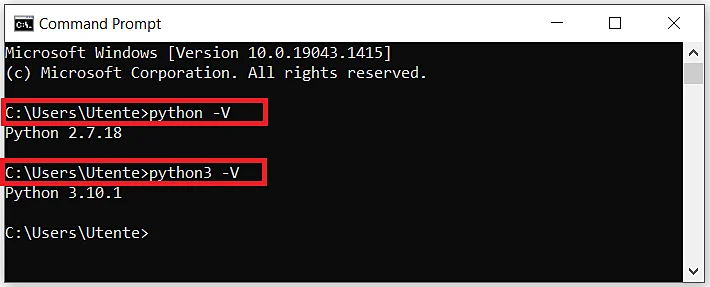
Install Python on Windows from Anaconda Navigator
Instead of the full installer from the official Python website, you lot can use open-source Anaconda Navigator, a pop Python and R distribution for data science and machine learning tasks.
Stride 1. Open up the official Anaconda website, and select Individual Edition in the menu of Products

Step 2. Download the installer
The organisation will automatically suggest the about suitable bundle for your operating system (Windows):

Pace 3. Run the installer
Find the downloaded installer for Anaconda in your Downloads folder, and run information technology:

During the installation process leave all the options as default on all the screens. In one of the windows, though, you can make up one's mind to modify the installation location, merely information technology is generally all-time to leave it as it is:

The installation process can take a few minutes.
Now Anaconda has been successfully installed on your computer.
How to run your beginning Python code on Windows
Now that you lot accept installed Python, whether from the official Python website or using Anaconda Navigator, you're fix to run your starting time Python code.
If yous installed Python from the official Python website
Blazon idle in Windows search, and select the necessary version of IDLE (in the example you installed dissimilar Python versions, there will be corresponding versions of IDLE):
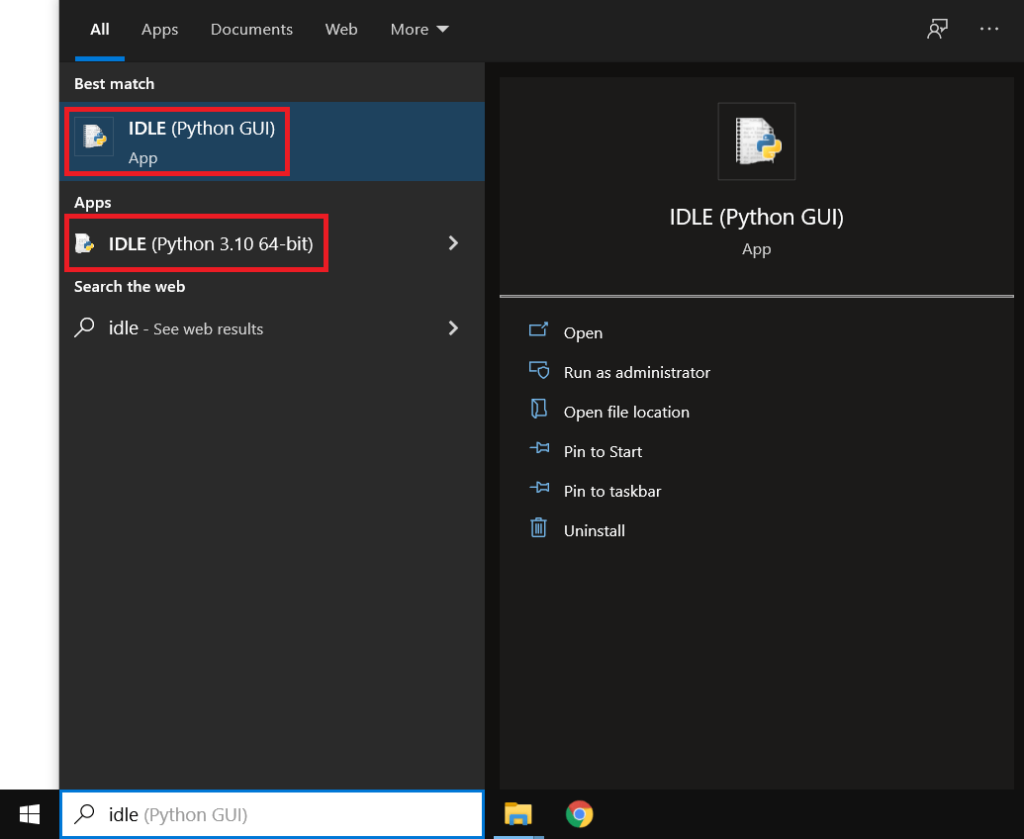
At present you can start coding, fifty-fifty in parallel in unlike Python versions:


If you installed Python from Anaconda Individual Edition
- Blazon
anacondain Windows search, and openAnaconda Navigator:

- Choose from many applications the near suitable one for your purposes. For case, you tin can opt for Jupyter Notebook, a popular data scientific discipline application for creating and sharing documents combining code, charts, and storytelling:
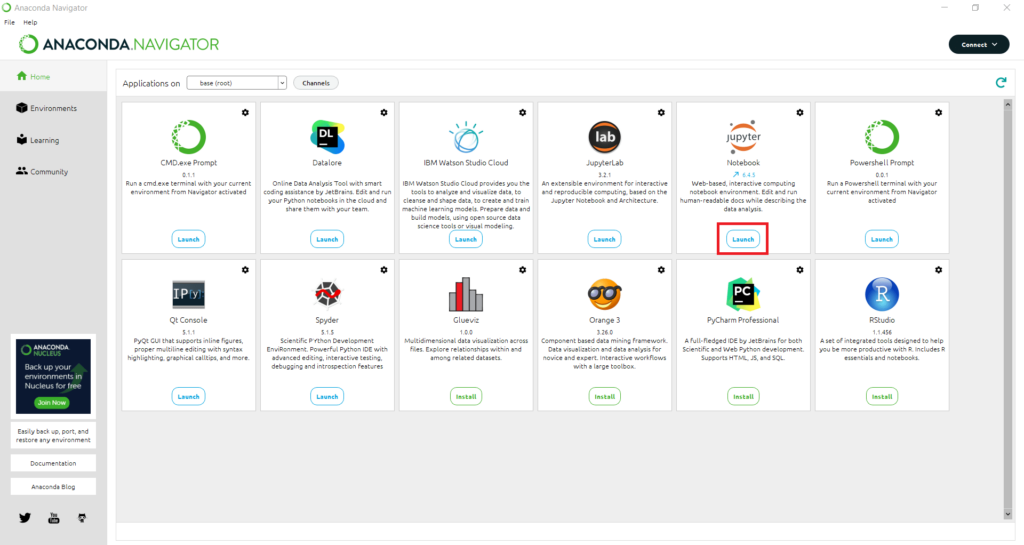
- Navigate to the folder where you are going to save your code, and create a new Python notebook:

- Showtime coding:

How to update Python to the latest version on Windows
If y'all installed Python from the official Python website
Just as you lot did when initially installing Python, open up the Python Releases for Windows page, select the latest Python release, download and run the suitable installer.
If the latest release is just a new Python patch of the same major version every bit your current version (eastward.g., 3.9.8 and iii.9.ix), you will see the following option in the pop-up window:
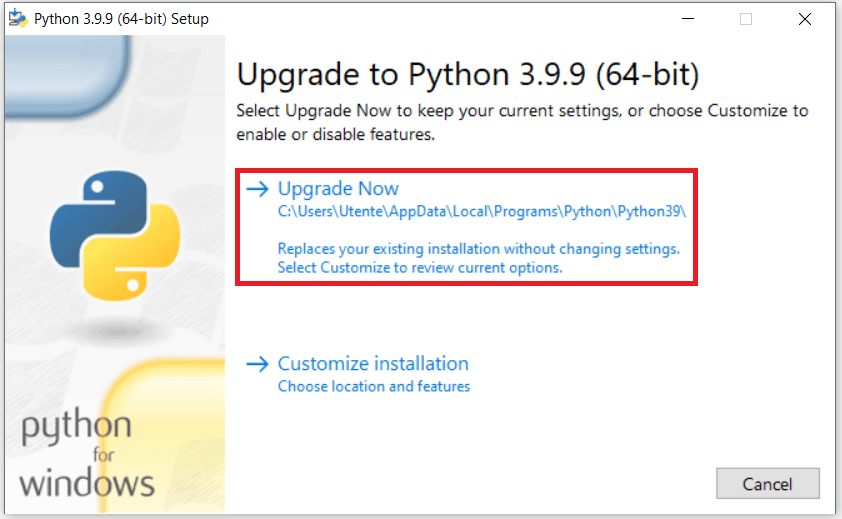
In this case, the latest Python version volition be installed on your reckoner, and the previous version will be removed. You need to restart your automobile subsequently.
If the latest release is a new major version of Python with respect to your current version (east.g., 3.ix and three.ten), yous will meet the same option every bit on the initial installation:
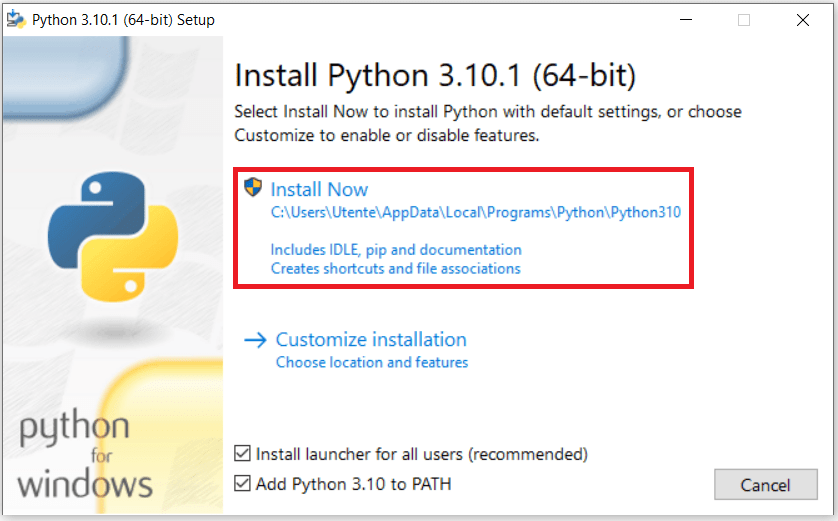
In this case, the latest Python release will be installed on your computer but also the previous version will remain. If necessary, you can uninstall it manually using the Control Panel.
If you installed Python from Anaconda Private Edition
Type anaconda in Windows search, and open up Anaconda Prompt. To update the Python version for the base of operations (root) surround to the latest Python version available for the current Anaconda release, run conda update python.
(Side note: You lot may need first to update Anaconda itself to the latest version, by running conda update conda.)
In the snapshot below, you lot tin can see that afterward updating the Python version on Anaconda to the latest version, nothing actually changed: the version remained 3.ix.7, instead of being updated to the latest (currently) Python version iii.x.i:
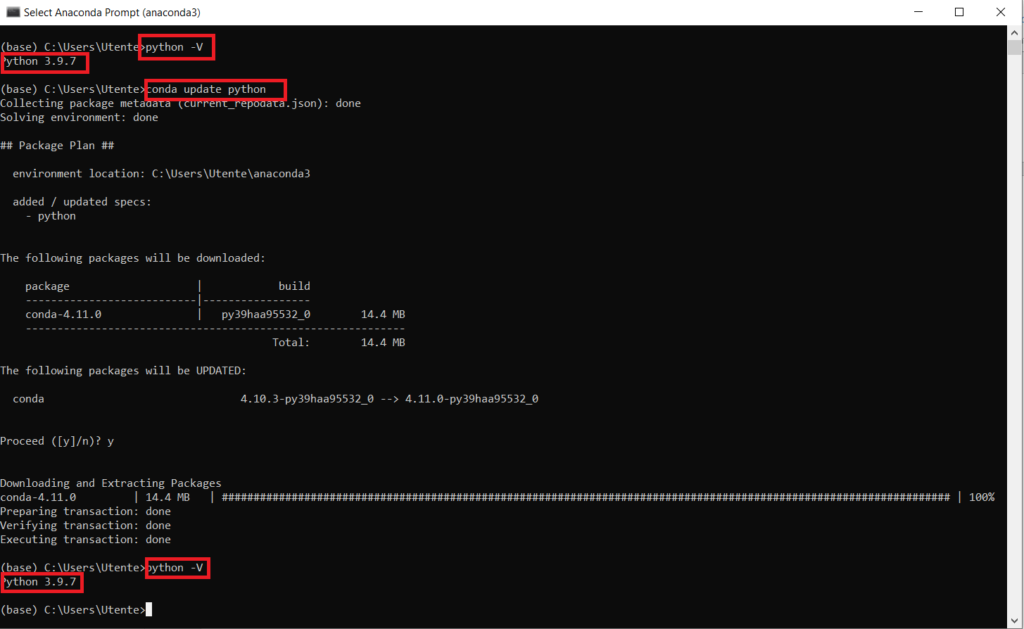
This happened because Python 3.9.7 is the latest possible Python version available for the electric current Anaconda release.
Yous tin can wait for the next Anaconda release, or consider creating a new virtual environment on Anaconda:
conda create -n python10 python=3.10
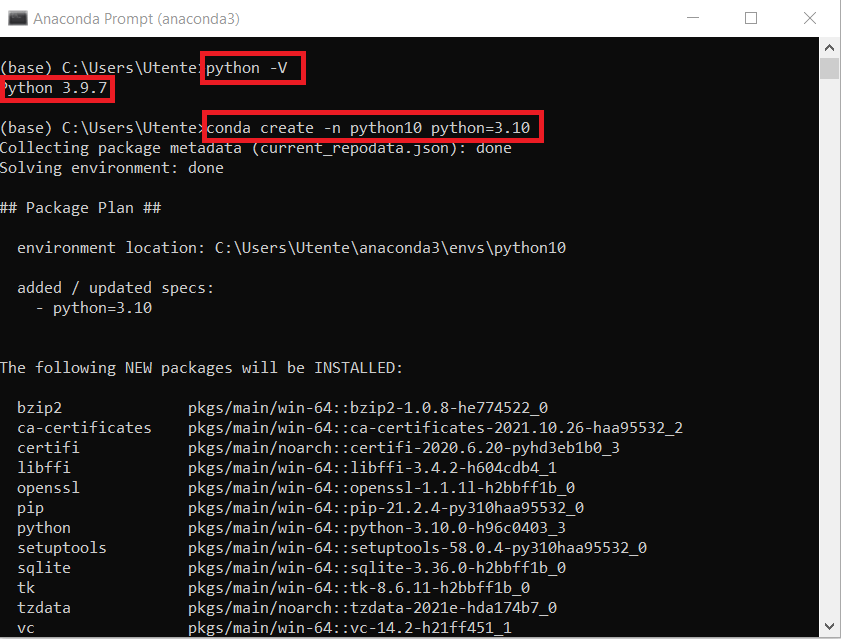
Above, yous created a virtual Anaconda environment called python10 (feel complimentary to give it whatsoever other proper noun), with the official latest version Python three.x.
Now, to be able to work in this environment, you have to actuate it, running conda activate python10:

Notice how the proper noun of the active environment changed from base to python10. As well, notice that if you cheque the Python version, you will run into that information technology has been updated to Python three.10.0.
Unfortunately, it isn't possible to specify the exact patch of the latest version when creating a new virtual surroundings (meaning that you can merely write python=iii.10 and not python=3.10.1).
You can continue coding in Python 3.10.0 in the created virtual environs from the command line. Alternatively, since Anaconda is, commencement of all, a convenient GUI Interface, yous tin go once more to Anaconda Navigator, select the new surroundings, install any applications you lot need (if they are available for that surroundings), and start working there.

You can likewise easily create a new virtual environs with a necessary Python version directly from Anaconda Navigator:
- Open the
Environmentstab of Anaconda Navigator. - Press the
Createpush at the bottom of the screen. - Give a name to the new environment, and select the version of Python.
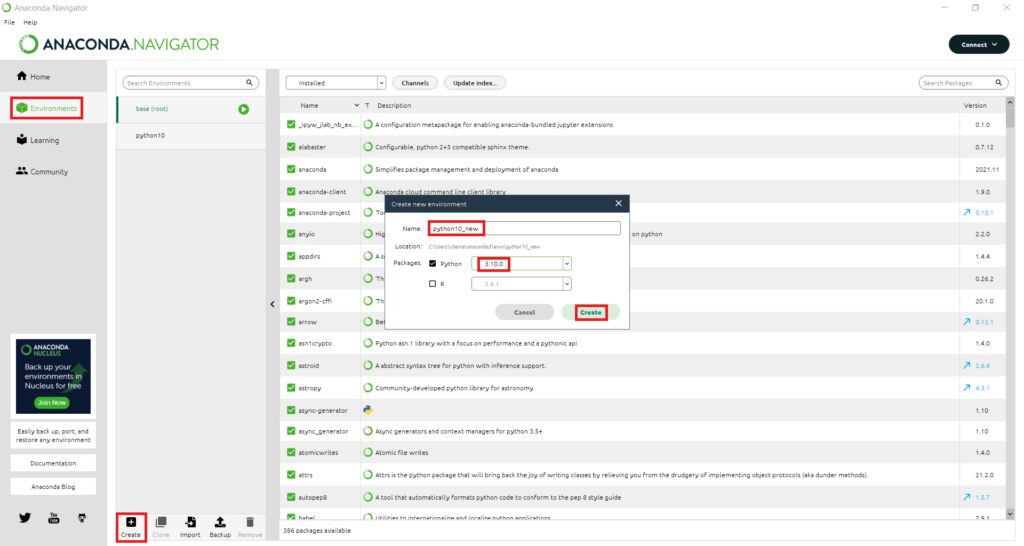
A new environment chosen python10_new has been created:
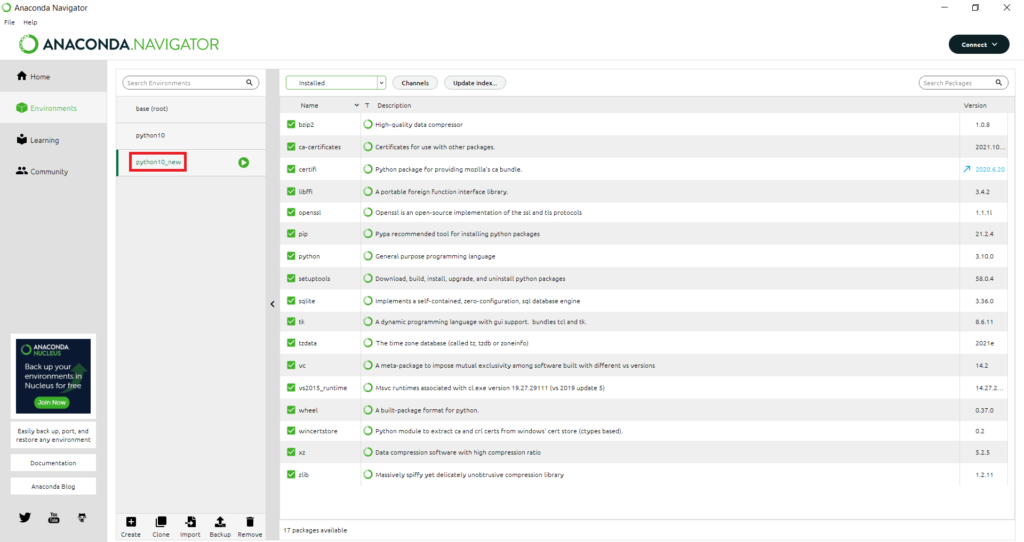
- Get to the Home tab, where the new environment will exist already selected automatically.
- Install whatever bachelor applications yous demand and starting time coding.
Conclusion
In this tutorial, y'all have learned how to correctly download and install Python both from the official website and Anaconda, update it to the latest version if necessary, and run Python scripts on Windows. At present you have all the necessary tools and settings to showtime working in Python.
Source: https://www.dataquest.io/blog/installing-python-on-windows/
Posted by: bellparist98.blogspot.com

0 Response to "How To Work In Python In Windows"
Post a Comment